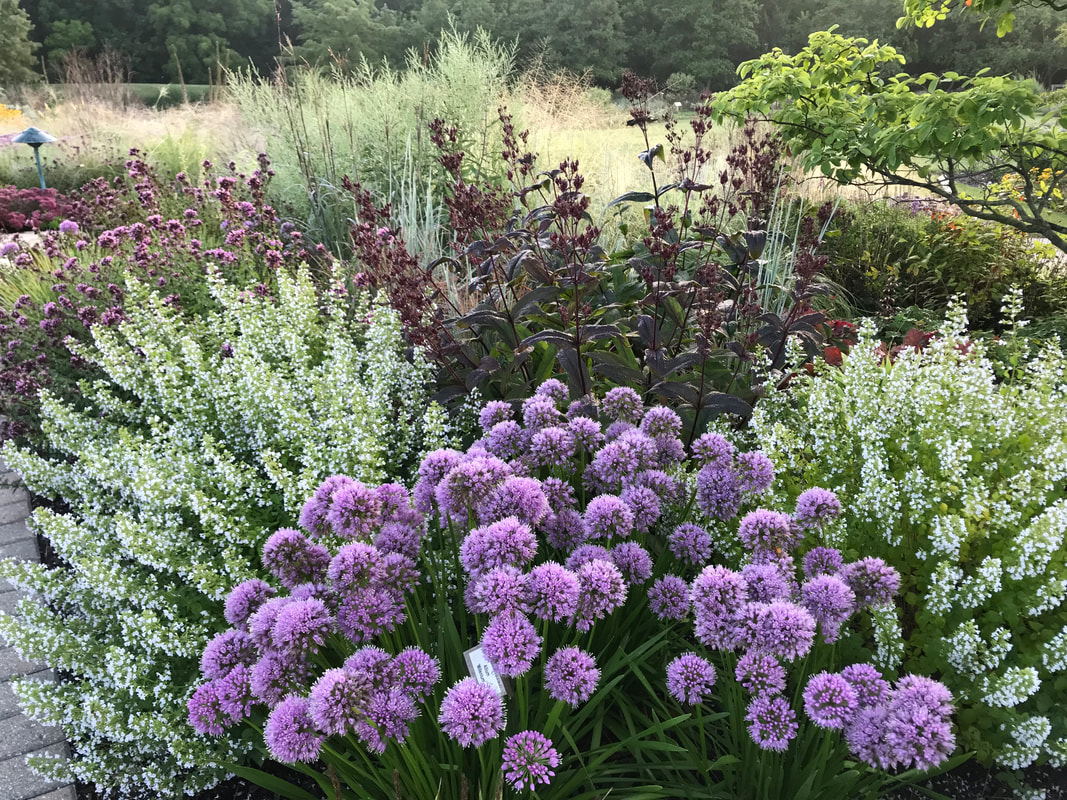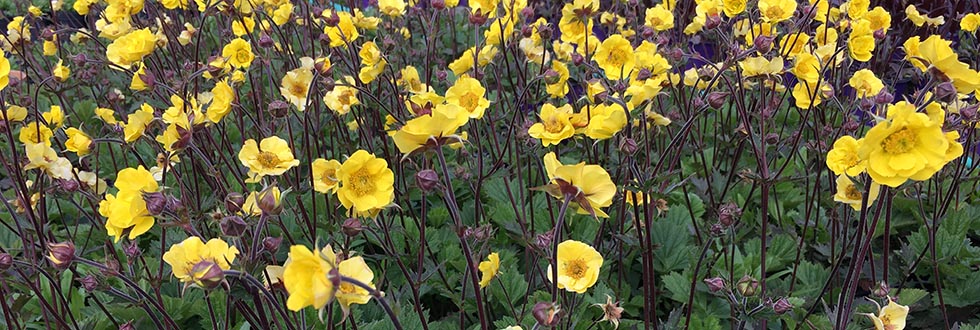|
Planting with Purpose - Using Keystone Native Plants Isn’t it fascinating to sit and watch butterflies flit from flower to flower? One of the most memorable moments of mine was at the Rotary Gardens in Janesville in the Children’s Garden. Movement filled the entire stretch of the zinnia border - it was a butterfly haven! It was magical and spellbinding. I could have stood there for hours mesmerized. And I’m not the only one. The ‘planting for pollinator’ movement is growing with 1 out of 4 Americans purchasing plants specifically to attract pollinators in 2021. This leads to the next question: do certain plants attract more pollinators than others? To answer that, we need to take a step back and begin with the caterpillars. They support our food web and native plants, in turn, support them. In fact 14% of our native plants support 90% of the various butterfly and moth species! This tells us that not all native plants are created equal. The ‘key’ is to use keystone plants - those that attract the most species of caterpillars. And from there, we can dig even deeper into the keystone native plants that are native to our specific area. Here in Southeastern Wisconsin, we are part of the Eastern Temperate Forest ecoregion. Keystone native plants for our ecoregion fall into two categories: those that are host plants supporting caterpillars of butterflies and moths, and those that also provide pollen for the native bee population both specialists and generalists. The top caterpillar-supporting keystone trees for us to add to our landscapes are:
Compare that with a tree like Stewartia, which is a beautiful tree, but only supports one type of caterpillar species. The top two keystone native shrubs that support both caterpillars and provide pollen for native bees:
We know the importance of incorporating natives into our personal habitats, but can you see how this added information can influence our native plant purchases so we are planting even more intentionally and more effectively? It’s extremely exciting! You can learn more at nwf.org/keystoneplants where this data was taken from. Also consider joining our virtual discussion on this topic coming up in March (see below). Keep the movement going by planting natives which benefits all of us. Happy growing! Tracy Hankwitz is a horticulture adjunct for Gateway Technical College and owner of Bella Botanica LLC located in Springfield, WI. Explore this topic further by joining her for a free monthly virtual gardening discussion on Wednesday, March 9 at 6:30 pm. Register here.
0 Comments
It never fails. The film that wins an Oscar for best picture is usually not well-known. I think that’s what happened with this year’s Perennial Plant of the Year. The plant that has checked all the boxes and has won this year’s highest perennial honor is Calamintha nepeta subsp. nepeta. Calamintha, also known as calamint, will grow well in a wide range of climates, is low maintenance, is virtually pest and disease free, and offers interest in multiple seasons. It’s also deer resistant and pollinators love it. Seriously, it comes alive with movement from all the bees flocking to it! Sit quietly nearby a planting of calamint and you can hear it hum. If you are familiar with catmint (Nepeta spp.), then think of calamint as a cousin. It is a member of the mint family with aromatic foliage and square stems, but it does not spread by invasive runners like the mint that comes to mind. It’s white delicate flowers are often touched with blue as they age. Calamint is one of the few perennials that has a long period of bloom - early summer into fall. It grows best in full sun up to 18 inches tall and wide. Calamint also happens to be one of the most versatile plants when creating perennial combinations in the landscape. It’s bushy habit reminds me of a soft, white, billowy cloud which is the perfect filler plant in the landscape. One combination strategy is to plant it with vertical- growing perennials like purple coneflowers (Echinacea purpurea), a mix of Betonys (Stachys ‘Summer Romance’ and ‘Summer Crush’), or any of the Salvias. A good partner that offers contrasting texture and will carry the interest into the fall is Sedum ‘Autumn Joy’. My favorite combination is calamint interplanted with the broad leaves of Allium ‘Summer Beauty’ or ‘Windy City’ and the blue grassy foliage of Festuca ‘Cool as Ice’. When shopping for calamint, a word of caution: Be aware that some cultivars can reseed and become a problem in the garden. Look for Calamintha nepeta subsp. nepeta, which has smooth, glossy leaves - not pubescent (soft, fuzzy) ones.
Happy gardening! Tracy Hankwitz is a Horticulture Adjunct at Gateway Technical College and owner of Bella Botanica, LLC located at 1787 Walworth Street, Springfield, WI. All photos in this post are compliments of Midwest Groundcovers, LLC. I find it so exciting to discover a new perennial garden gem that performs well in my SE Wisconsin garden and then feel the need to make sure everyone else knows it and falls in love with it, too. The last few years, my fondness of Geums has grown into pure infatuation as I indulge in adding more to the garden every year. So here is my attempt to charm you with them as well. Geum, also known as Avens, is a member of the rose family so it is not surprising that it has a 5-petaled inflorescence like roses and apple blossoms. What is surprising, no matter how many times I see them in bloom, is how much they resemble miniature roses with their double layers of petals. They add a touch of elegance to the garden with their tidy and attractive, deep-green foliage and their lovely flowers that dangle above on wiry stems. Species & Hybrid Cultivars There are over 50 species of Geum. One of the most well-loved one here in Wisconsin is Geum triflorum (Prairie smoke) which is native to the midwest. Although other species originated in Greece and Turkey, the midwest has another claim to the many hybrid cultivars. Since 2006, Brent Horvath at Intrinsic Perennial Gardens in Hebron, IL has been breeding a new series of Geum called the Cocktail series. ‘Cosmopolitan’, ‘Mai Tai’, ‘Tequila Sunrise’, ‘Banana Daiquiri’, just to name a few, vary in colors ranging from yellows, bright orange, and sweet pinks, rose, cream, and peach. Even the creamy white-colored ‘Champagne’ is charming and is more robust than the others in the series. How to Care for Geum Geum make good cut flowers to admire indoors in a vase. They grow 12-18” tall when in bloom and are deer and rabbit resistant. In clay soil, they can be short-lived, so place them in a spot that is well-drained and receives morning sun accompanied by shade in the afternoon. Dividing them every few years can also help prolong their life span. The lovely blooms begin to open as early as late April and can last into June. Remove spent flowers to extend the bloom period. In spring, fertilize established Geum lightly once annually with a granular fertilizer (try an organic one by Fox Farm or Espoma). By the way, this is how and when most perennials should be fertilized. When you clean out your beds in spring, apply the fertilizer to slowly feed through the season, then top with mulch. Faded blooms can be deadheaded to prolong bloom time, but leave a few on so you don’t miss their cool wispy seed heads. Don’t be too hasty to deadhead Prairie Smoke, or you will miss why it is so named. Designing with Geum
Geum are ideal for rock gardens as long as the soil isn’t too dry. Plant them in drifts of 3, 5, or 7 along the front of the border in a staggered manner to create a naturalized look. Remember there are no straight lines in nature! Plant other spring-bloomers nearby like Polygonatum ’Prince Charming’ and mix in summer bloomers to compliment the Geum foliage. One of my favorite combinations is Geum x ‘Champagne’ planted with Hosta ‘First Frost’ and Geranium ‘Rozanne’ (see above). The effect of the greens, purples and creams is stunning elegance. Have you been convinced or at least intrigued? Seek them out - it is worth the effort. - Tracy |
AuthorHi, I'm Tracy - horticulturist, beauty-seeker, Word-lover, and blessed to be the owner of Bella Botanica. I also love to write about plants, gardening, and about my faith journey. Thanks for reading! Archives
March 2024
Categories
All
|








 RSS Feed
RSS Feed